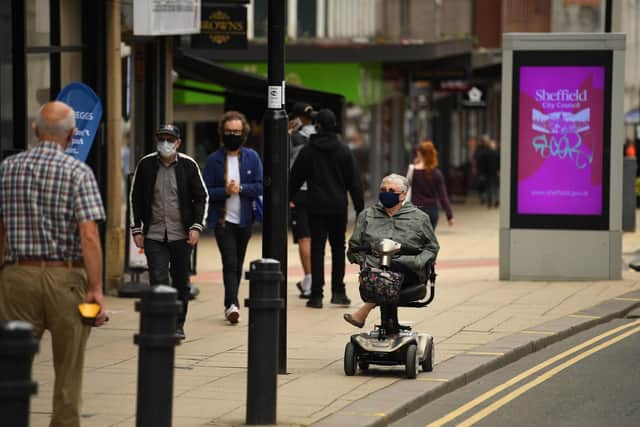What's the science behind Sheffield Tier 2 lockdown restrictions? Here's what the experts say
and live on Freeview channel 276
But what is the science behind this and other new restrictions, should they have been introduced sooner and should they be more wide-ranging?
Newly published documents from the Scientific Advisory Group for Emergencies (SAGE), the panel of experts advising the Government, shed fresh light on the thinking behind the measures and raise questions about whether the Government should have acted sooner to address the alarming rise in coronavirus infections.


Advertisement
Hide AdAdvertisement
Hide AdOne of those documents sets out numerous interventions and seeks to weigh up the pros and cons of each when it comes to stopping the spread of the virus and the wider impact on society.
Ban on households mixing indoors
SAGE suggested reducing contact between different households within the home would have a ‘moderate impact’ on transmission, potentially reducing the all-important ‘R’ rate which shows how fast the virus is spreading by up to 0.2.
But they warned that the loss of social networks ‘increases the risk of deepening economic disadvantage’ by preventing shared childcare and care for older people, which explains why the Government has allowed people to form ‘childcare bubbles’ providing informal care for under-14s.
They also pointed out that behaviour within people’s homes is difficult to enforce and said policies ‘may appear inconsistent’ if people are still allowed to go to work, attend school and visit pubs and restaurants.
Only visit care homes in ‘exceptional circumstances’
Advertisement
Hide AdAdvertisement
Hide AdThe new tier 2 rules also prevent people from visiting relatives in care homes ‘except in exceptional circumstances’ like when a loved one is dying.
That’s despite SAGE advising that banning visitors to hospitals and care homes would have a ‘low impact’ on transmission as ‘most introduction at care homes is probably via staff’.
The document does say, however, that ‘if infection does get into care homes the impact can be devastating’.
Closing bars, pubs, cafés and restaurants
Pubs and restaurants are allowed to remain open under tier 2 restrictions, albeit with a 10pm curfew, though pubs in tier 3 Liverpool must close unless they serve food.
Advertisement
Hide AdAdvertisement
Hide AdSAGE claimed closing hospitality venues would have a ‘moderate impact’ on transmission, potentially reducing the ‘R’ number by 0.1-0.2, with the environmental risk likely to be higher than many other indoor settings due to the time customers spend there and their proximity to one another.
The group said curfews were likely to have only a ‘marginal impact’ but that allowing customers to sit outside only was ‘likely to be much lower risk’.
And it advised there would be ‘high indirect impacts’ due to the loss of income for staff and ‘low psychological impact’ due to reduced social contact for customers.
Was a ‘circuit-breaker’ lockdown the best option?
At a meeting on September 21, experts from SAGE advised that a package of measures was needed to reverse the ‘exponential rise’ in cases, and set out a shortlist of interventions which they said should be considered for ‘immediate introduction’.
Advertisement
Hide AdAdvertisement
Hide AdAmong those was a ‘circuit-breaker’ lockdown – similar to that introduced in March but for a shorter period of time, probably two to three weeks.
Health secretary Matt Hancock last month called a new national lockdown as a ‘last resort’ and the new three-tier lockdown system appears to be an alternative.
But the fact SAGE had called for one more than three weeks ago has raised questions about whether more extreme measures should have been taken sooner.
Could more have been done to prevent Covid spreading at universities?
Coronavirus has spread rapidly among university students since the new academic year began and although younger people are at lower risk there are fears they could spread it to older people who are more vulnerable.
Advertisement
Hide AdAdvertisement
Hide AdAt Sheffield’s two universities, there have been more than 1,700 confirmed cases of Covid-19.
Most universities reopened with face-to-face teaching, though some have now moved more learning online, yet SAGE had recommended online-only teaching at universities in its shortlist of measures on September 21.
“All university and college teaching to be online unless face-to-face teaching is absolutely essential,” states the document, which has just been published.